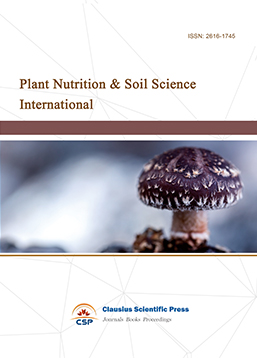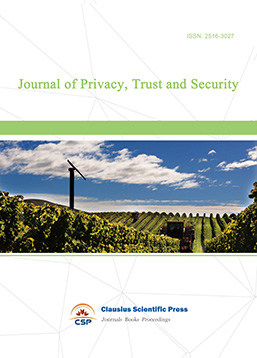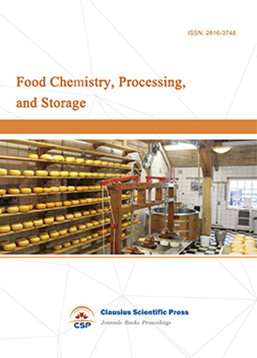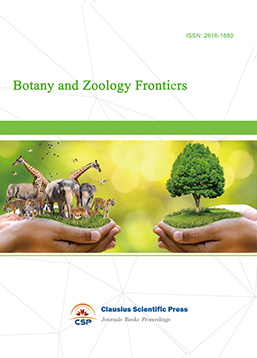Plant-based fermentation: Study of foodborne pathogens in spontaneous fermented vegetables
DOI: 10.23977/afshn.2023.050113 | Downloads: 3 | Views: 231
Author(s)
Yisong Tai 1
Affiliation(s)
1 Hainan College of Economics and Business, Haikou, Hainan, 571127, China
Corresponding Author
Yisong TaiABSTRACT
The aim of this study was to investigate the fate of Salmonella in the spontaneous carrots and cabbage fermentation. In order to achieve this purpose, it inoculated salmonella in the vegetables with and without adding of mixed starter-cultures. Then during the short term cultivation, the fermentation could be reproducible. For the carrots, after 7 days' fermentation, the population of salmonella maintained or had a little increase compared with the initial number and this number would have a reduction when vegetables were put into the refrigerator for 2 weeks. As for the cabbages, they had an obviously reduction in the amount of salmonella and there were no colony could be observed after 2 weeks' storage in refrigerator. In addition, the starter cultures can effectively suppress the growth of salmonella. Moreover it is necessary for spontaneous fermentation to have a scientific risk assessment to prevent the occurrence of such accidents.
KEYWORDS
Salmonella; Spontaneous fermentation; Cabbage; Carrots; Risk assessmentCITE THIS PAPER
Yisong Tai, Plant-based fermentation: Study of foodborne pathogens in spontaneous fermented vegetables. Advances in Food Science and Human Nutrition (2023) Vol.5: 97-106. DOI: http://dx.doi.org/10.23977/afshn.2023.050113.
REFERENCES
[1] Staub J E, Bacher J. Cucumber as a processed vegetable[M]//Processing vegetables. Routledge, 2023: 129-193.
[2] Ajibola O O, Thomas R, Bakare B F. Selected fermented indigenous vegetables and fruits from Malaysia as potential sources of natural probiotics for improving gut health[J]. Food Science and Human Wellness, 2023, 12(5): 1493-1509.
[3] Hii C L, Jangam S V, Ong S P, et al. Processing of Foods, Vegetables, and Fruits: Recent Advances[J]. Transport Processes Research Group: https://arunmujumdar. com/ebooks, 2015: 63-68.
[4] Khubber S, Marti-Quijal F J, Tomasevic I, et al. Lactic acid fermentation as a useful strategy to recover antimicrobial and antioxidant compounds from food and by-products[J]. Current Opinion in Food Science, 2022, 43: 189-198.
[5] Wuyts S , Van Beeck W , Oerlemans E F M ,et al.Carrot Juice Fermentations as Man-Made Microbial Ecosystems Dominated by Lactic Acid Bacteria[J].Applied and Environmental Microbiology, 2018:AEM.00134-18.DOI:10.1128/AEM.00134-18.
[6] Yi X, Li J, Liao D, et al. Carrot and carotene and multiple health outcomes: An umbrella review of the evidence[J]. Journal of the Science of Food and Agriculture, 2023, 103(5): 2251-2261.
[7] Einson J E , Rani A , You X ,et al.A Vegetable Fermentation Facility Hosts Distinct Microbiomes Reflecting the Production Environment[J].Applied and Environmental Microbiology, 2018, 84(22).DOI:10.1128/AEM.01680-18.
[8] Wang J, Sui Y, Liu X, et al. Exploring potential correlations between fungal communities, safety, and quality properties of traditional fermented sauerkraut from Northeast China[J]. LWT, 2023, 185: 115185.
[9] West N P, Pyne D B, Cripps A W, et al. Lactobacillus fermentum (PCC®) supplementation and gastrointestinal and respiratory-tract illness symptoms: a randomised control trial in athletes[J]. Nutrition journal, 2011, 10: 1-11.
[10] Li J, Meng Q, Wang C, et al. The interaction between temperature and citric acid treatment in the anaerobic fermentation of Chinese cabbage waste[J]. Journal of Cleaner Production, 2023, 383: 135502.
[11] Flores-Mireles A L, Walker J N, Caparon M, et al. Urinary tract infections: epidemiology, mechanisms of infection and treatment options[J]. Nature reviews microbiology, 2015, 13(5): 269-284.
[12] Andino A, Hanning I. Salmonella enterica: survival, colonization, and virulence differences among serovars[J]. The Scientific World Journal, 2015.
[13] Teklemariam A D, Al-Hindi R R, Albiheyri R S, et al. Human Salmonellosis: A Continuous Global Threat in the Farm-to-Fork Food Safety Continuum[J]. Foods, 2023, 12(9): 1756.
[14] Zhao Y, Zhao Z, Gao Y, et al. Assessment of autochthonous lactic acid bacteria as starter culture for improving traditional Chinese Dongbei Suancai fermentation[J]. LWT, 2023, 178: 114615.
[15] Rocchetti G, Rebecchi A, Lopez C M, et al. Impact of axenic and mixed starter cultures on metabolomic and sensory profiles of ripened Italian salami[J]. Food Chemistry, 2023, 402: 134182.
[16] Toushik S H, Kim K, Ashrafudoulla M, et al. Korean kimchi-derived lactic acid bacteria inhibit foodborne pathogenic biofilm growth on seafood and food processing surface materials[J]. Food Control, 2021, 129: 108276.
[17] Chan M Z A, Tan L T, Heng S W Q, et al. Effect of co-fermentation of Saccharomyces boulardii CNCM-I745 with four different probiotic lactobacilli in coffee brews on cell viabilities and metabolic activities [J]. Fermentation, 2023, 9(3): 219.
[18] Ricci A, Cirlini M, Levante A, et al. Volatile profile of elderberry juice: Effect of lactic acid fermentation using L. plantarum, L. rhamnosus and L. casei strains[J]. Food Research International, 2018, 105: 412-422.
[19] An Y, Cai X, Cong L, et al. Quality Improvement of Zhayu, a Fermented Fish Product in China: Effects of Inoculated Fermentation with Three Kinds of Lactic Acid Bacteria[J]. Foods, 2022, 11(18): 2756.
| Downloads: | 1047 |
|---|---|
| Visits: | 29707 |

 Download as PDF
Download as PDF



